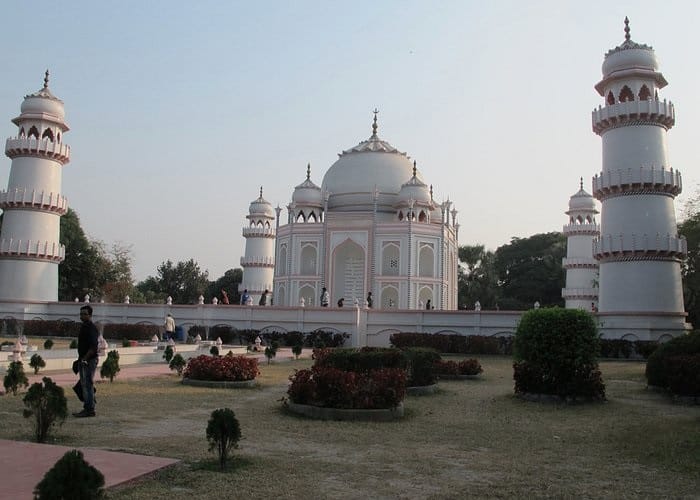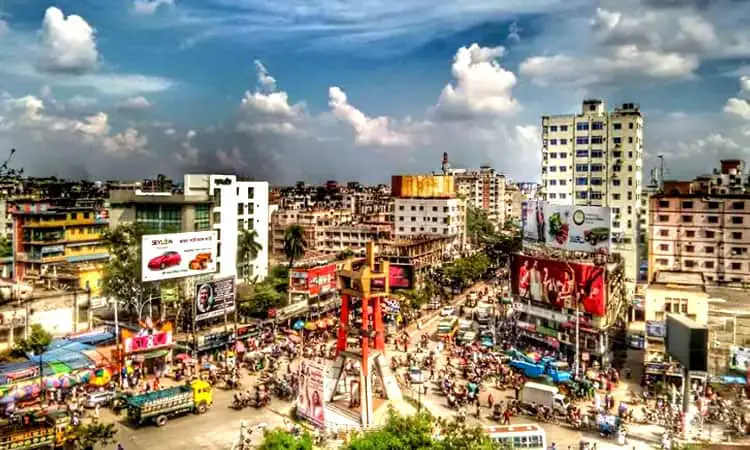The smallest district in Bangladesh is Narayanganj. Located in the central part of the country, Narayanganj covers an area of approximately 76.64 square kilometers. It is a densely populated district with a rich history and significant industrial importance. Narayanganj is known for its thriving textile and garment industries, contributing to the country’s economy.
Location and geographical features of Narayanganj
Narayanganj is a city located in the east-central part of Bangladesh. It borders both banks of the Sitalakhya River at its confluence with the Dhaleshwari River. The city is situated about 16 km (10 mi) southeast of the capital city of Dhaka and has a population of approximately 2 million. It is one of the busiest trade markets in the country, serving as a terminal market for various goods and a collection center for hides and skins. Narayanganj is also a chief river port for nearby Dhaka, with steamer connections to major inland ports and cities. The city, in conjunction with Dhaka, forms a major industrial region with numerous jute presses and mills, cotton mills, and various other manufacturing plants.
Historically, Narayanganj has been a center for the jute industry, earning its nickname as the “Juteopolis of Bangladesh.” The city has many public libraries, several colleges, and a number of hospitals and medical facilities. It is known for its historic buildings, such as the Kadam Rasul shrine, Sunakanda and Hajiganj forts of the Mughal era, and the Lakshmi-Narayana temple, dating back to the 12th century. Narayanganj is also the birthplace of the Narayanganj Municipality, which was incorporated on September 8, 1876, and in 2011 was merged with two other municipalities to form the Narayanganj City Corporation. As the sixth-largest city in Bangladesh, Narayanganj serves as a center for business and industry, particularly in the trade and textile sectors. With its rich historical and cultural heritage, Narayanganj is a unique and essential part of Bangladesh’s landscape.
Architectural Marvels of Narayanganj

- Nayanganj, the smallest district in Bangladesh, is not just known for its jute mills. It is also home to some beautiful architectural wonders. The Architectural marvels of Narayanganj are unique and worth exploring.
- The district’s architecture has been shaped by its history. Various empires ruled the region, and each era left behind its architectural heritage. One of the oldest industrial districts in the country, Narayanganj has witnessed the growth of many small and medium industries, which has led to the development of some unique architectural marvels.
- Designs that consider local climatic conditions and use locally available materials are particularly prominent in Narayanganj’s architecture. Most of the structures are well-suited to the tropical climate of the region. The district’s clay huts are popular due to their practicality and appropriateness for the local climate.
- If you are interested in architecture, Narayanganj is a must-visit destination. With unique architectural wonders, a friendly and inclusive community, and stunning natural scenery, Narayanganj is an architectural marvel that deserves recognition.
Historical significance and cultural heritage of Narayanganj
Narayanganj is the smallest district in Bangladesh that has a rich historical significance and cultural heritage. The district is home to the ancient city of Sonargaon, which was the former capital of Bengal during the reign of Isa Khan. The region was taken over by the Mughals as the Mughal empire expanded in the 14th century. Narayanganj is named after a Hindu religious leader, Narayan Das Pandey, who acquired ownership of the region from the British in 1766 after a war. He declared the marketplaces on the banks of the river Shitalakshya as “Pandey Bazar” to pay for the expenses of the worship of Lord Shiva.
Narayanganj played a significant role in the colonial period and was an important trading hub because of its strategic location on the banks of the Shitalakshya and Dhaleshwari rivers. The Rally Brothers started a company exporting jute to the West in 1830 aided by a company from Kolkata. By 1908, 18 European companies and two Indian companies were trading in jute from Kolkata. Narayanganj became a center of the jute industry and was nicknamed the “Jute Capital of Bangladesh”. The district was also a bustling river port for nearby Dhaka and historically a collection center for hides and skins.
The district has several architectural and cultural landmarks like the Kadam Rasul shrine built in 1801 by Ghulam Muhammad of Tippera, the Sunakanda and Hajiganj forts of the Mughal era, and the temple of Lakshmi-Narayana built in the 12th century, for which the town is named. The district also pioneered in merchandising yarn and dyeing items. The cottage industry, like weaving, is abundant in this district. Today, Narayanganj is a busy trade market and an industrial hub with many jute presses, cotton mills, and other large industries.
The industrial importance of Narayanganj
Narayanganj, known as the ‘Dundee of East,’ is a fusion of East and West and is located in central Bangladesh. It is one of the oldest, most prominent, and busiest river ports in the country, situated on the bank of the Shitalakshya River. The city embraces its history while retaining its traditions and businesses that have attracted thousands of inhabitants and migrants from neighboring districts.
- Narayanganj is a center of business and industry, especially trade, textile, and jute mills, which have earned it the nickname of the ‘juteopolis of Bangladesh.’ The city contributes significantly to the economy of Bangladesh, accounting for 55% of the country’s total knitwear manufacturing and 33% of the country’s total textile mills. Additionally, the textile and garments industry generated employment for over 130,000 people in 2011.
- Narayanganj’s strategic location makes it easy to import and export goods and services through waterways, connecting it with neighboring and other Asian countries. The presence of a special economic zone and 46 domestic and international entrepreneurs have contributed over $1.6 billion in exports and created over 40,000 jobs.
- Rapid industrialization in the city has attracted both local and foreign investors, making Narayanganj a regional industrial hub. However, poor infrastructure, improper waste management, and unplanned urbanization have increased environmental threats and reduced the city’s attractiveness for living. Despite the prosperity of the export-oriented industries, professionalism and inherited business practices undermine the sector’s prospects and achievements.
References:
https://www.sattacademy.com/job-solution/single-question?ques_id=44626
http://www.readbd.com/question/25053/which-is-the-smallestin-terms-of-area-district-in-bangladesh

